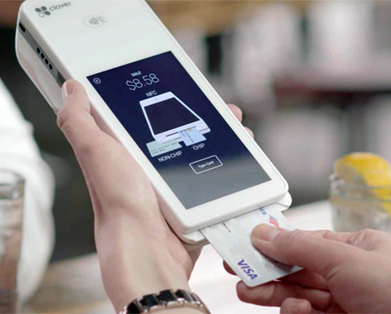A good credit score can help you in buying a home, starting a business or
getting a car loan. CNBC Select explains how to get started building credit.
Life is better with a good credit score. This three-digit number affects nearly every facet of
your financial life and makes it easier to achieve important milestones, like renting an
apartment, buying a car or getting a mortgage for your first home.
In this guide, we will go over everything you need to know about building credit — even if you
have no credit history whatsoever.
Whether you are a recent high school graduate or establishing credit later in life, learn how to
get on the path toward stellar credit.

1. Why you need a good credit score
Establishing a good credit score isn’t a complex process, but it’s vital for your overall
financial picture. When you have a good or excellent credit score, you’ll have an easier time
being approved for renting an apartment, you’ll get better rates on car and homeowner’s
insurance and it’s cheaper to borrow money when you need it.
Having a good credit score can be especially helpful when facing an unexpected financial crisis,
like a lay off. When lenders see you as a trustworthy borrower, you’re more likely to receive
favorable offers for 0% financing if you’re ever in a pinch.
A good credit score also unlocks access to the best rewards credit cards that offer cash back,
travel perks, protection on major purchases and luxury benefits.
Luckily, it’s not difficult to establish a healthy credit score once you understand how it works.
This guide will walk you step-by-step through the basics, so you can fully understand how your
score is calculated, how to establish good credit and how to maintain it in the long run.

2. What is a good credit score?
Credit scores fall within a range of 300 to 850, with 300 being very poor and 850 being
excellent. Credit score ranges vary based on the credit scoring model used (FICO versus
VantageScore) and the credit bureau (Experian, Equifax and TransUnion) that pulls the score.
Below are the credit ranges for the two most popular scoring models:
FICO Score credit ranges
- Very poor: 300 to 579
- Fair: 580 to 669
- Good: 670 to 739
- Very good: 740 to 799
- Excellent: 800 to 850
VantageScore credit ranges
- Very poor: 300 to 499
- Poor: 500 to 600
- Fair: 601 to 660
- Good: 661 to 780
- Excellent: 781 to 850
If your lender is pulling your score from Experian, they will see your FICO credit score. You
would need to score between 670 and 739 to have a good credit score.
If the lender is checking your VantageScore with TransUnion, you need to rate between 661 and
780.
Unfortunately, there is no way to predict which credit scoring model your lender will see.
Lenders request your information from one of the three credit bureaus, and they don’t always use
the same one every time.

3. What is the difference between a good and excellent credit score?
“Excellent” is the highest tier of credit scores you can have. For FICO, it falls between the
range of 800 to 850, and for VantageScore, it’s between 781 to 850. A perfect credit score of
850 is hard to get, but an excellent credit score is more achievable.
Many of the best credit cards require good or excellent credit. If you want to benefit from
competitive rewards, annual statement credits, luxury travel perks, 0% APR periods and more,
you’ll need at least a good credit score. And if you have an excellent credit score, you can
maximize approval odds.
For instance, if you’re looking to earn generous rewards on groceries and dining out, the
American Express® Gold Card offers 4X Membership Rewards® points when you dine at restaurants
worldwide and shop at U.S. supermarkets (on up to $25,000 per year in purchases, then 1X). But
you’ll need good or excellent credit to be approved for the Amex Gold, which CNBC Select named
the best rewards credit card of 2020.
And if you want to finance new purchases or get out of debt with a balance transfer card, such as
the Chase Freedom Unlimited®, you’ll also need good or excellent credit.
Even if your credit score falls within the excellent range, that is not a guarantee you’ll be
approved for a credit card requiring excellent credit. Card issuers look at more factors than
just your credit score, including income and monthly housing payments.

4. What are the disadvantages of having a poor or fair credit score?
- It’s less likely you’ll be approved for credit cards or loans
- If you are approved, you’ll get less favorable loan terms
- You’ll have limited credit card choices
A bad or fair credit score can have a big impact on your overall financial life, influencing the
type of loans and products you’ll be approved for.
On the FICO scoring model, a bad score is in the range of 300 to 579, and fair is in the range of
580 to 669. If you’re looking at a VantageScore credit score, a very poor score is between 300
to 499; poor falls between 500 to 600 and a fair score is between 601 to 660.
Here are three disadvantages to having a bad or fair credit score:
It’s less likely you’ll be approved for credit cards or loans
A bad credit score can reduce your approval chances for credit cards and loans, making it
difficult to accomplish many goals. If you want to get out of debt with a balance transfer card,
you’ll need good or excellent credit. And if you want to earn rewards or receive luxury travel
perks, it’ll be near impossible to find a card that accepts bad credit.
If you are approved, you’ll get less favorable loan terms
If you’re approved for credit, odds are you’ll receive less favorable terms, such as high
interest
rates or annual fees, compared to applicants with good credit. For example, one of CNBC Select’s
best credit cards for bad credit, the OpenSky® Secured Visa® Credit Card, has a $35 annual fee;
though there are no annual fee options.
You’ll have limited credit card choices
Bad credit limits which credit cards you can qualify for; the options you have will be primarily
secured cards. While a secured card, such as the Capital One® Secured Mastercard®, can help you
rebuild credit, you’re required to make a security deposit — typically $200 — in order to
receive an
equivalent line of credit.
Even if your credit score falls within the bad range, it’s not a guarantee you’ll be approved
for a
credit card requiring bad credit, as card issuers consider more than just your credit score.
If you have a less-than-stellar credit score, you should take action as soon as possible, so you
can
work toward good credit and increase your odds of being approved for financial products like
credit
cards and loans.

5. What are the factors that make up your credit score?
Credit scores are calculated differently depending on the credit scoring model used. Lenders can
pull from any scoring model they choose, but most rely on either the FICO score or the
VantageScore.
These are the factors that FICO considers when calculating your score, according to Experian:
- Payment history (35%): Whether you pay your credit card bills on time
- Amounts owed (30%): The total amount of credit and loans you’re using
compared to your total credit limit, also known as your credit utilization rate
- Length of credit history (15%): The length of time you’ve had credit
- New credit (10%): How often you apply for and open new accounts
- Credit mix (10%): Having a variety of installment loans and revolving
credit accounts, including credit cards, auto loans, mortgages and personal loans
These factors influence your VantageScore:
- Extremely influential: Payment history
- Highly influential: Type and duration of credit and percent of credit limit
used
- Moderately influential: Total balances/debt
- Less influential: Available credit and recent credit behavior and inquiries

6. How to check your credit score for free
Once you understand how your credit score is calculated, you should check your score. This will
give you insight into what products you may qualify for and what interest rates to expect. If
you have a low score, you can take steps to improve it. If you have a good or excellent score,
you can work to maintain it.
Checking your credit score doesn’t hurt your credit, and even if you’re not applying for a new
card or a loan, it’s smart to get into the habit of checking it regularly. (Learn about when
pulling your report could actually hurt your credit.)
Most credit card issuers provide free credit score access to their cardholders, making it easier
than ever to check and know your score.
Some issuers, such as Citi and Discover, provide free FICO Scores, while others, such as Chase
and Capital One, provide free VantageScores.
You can check your credit score in less than five minutes by logging into your credit card
issuer’s site or a free credit score service and navigating to the credit score section. There
will typically be a dashboard listing your score and the factors that influence it.
FICO and VantageScore will pull your credit score from one of the three major credit bureaus,
Experian, Equifax or TransUnion.
The above resources also provide insight into the key factors affecting your credit score,
simulators on how certain actions may affect your credit and helpful tips for improving your
credit score.

7. How to improve your credit score if you have no credit history
- Option 1: Become an authorized user
- Option 2: Get credit for paying monthly utility and cell phone bills on time
- Option 3: Open a college student card
Building good credit doesn’t happen overnight. Instead, you need to consistently practice
responsible credit behavior, such as paying bills on time and limiting your credit utilization
ratio.
Here are some credit building options that can help improve your credit score over time:
Option 1: Become an authorized user
If you’re looking to build credit, becoming an authorized user on someone else’s credit card is a
smart option. It can be relatively low-risk and allows you to build or boost your credit score.
But before you sign up there are some things you should know:
-
How can being an authorized user affect your credit?
When you’re added
as an authorized user to someone else’s credit card account, you can piggyback off their
credit. With that in mind, you should really only become an authorized user on an
account owned by someone with good (670-799) or excellent credit (800-850). Most major
card issuers report authorized user data to the three main credit bureaus — Experian,
Equifax and TransUnion — but you can call your issuer to confirm.
-
What responsibilities does an authorized user have?
An authorized user
has no liability whatsoever. Authorized users can make charges, but they aren’t
responsible for making payments. The primary cardholder has complete liability and is
responsible for paying the balance, requesting credit limit increases and generally
managing the account.
That said, it’s essential for authorized users to show good financial habits when using
someone else’s card. You should not spend beyond your means, and you should make a clear
plan with the cardholder to pay off your balance on time and in full each month.
You also don’t have to actually use the card to see your credit score rise as the result
of being an authorized user. So if the cardholder doesn’t feel comfortable trusting you
with your own card, you’ll still benefit from being linked to their account.
-
How do I add/become an authorized user on a credit card?
The primary cardholder has to add you as an authorized user. You can either do it online,
via your bank’s mobile app or over the phone. The process can be completed within a few
minutes, and your card will likely be mailed to the primary cardholder’s address.
Sometimes there’s the option to ship the card to an alternative address.
-
How much does it cost to be an authorized user?
Depending on the credit card, it may cost nothing to be added as an authorized user.
However, some credit cards charge a fee for authorized users. For example, the Chase
Sapphire Reserve® charges $75 annually for each additional card.
Credit cards that don’t charge authorized user fees include: Chase Sapphire Preferred®
Card, Capital One® Venture® Rewards Credit Card, Bank of America® Cash Rewards credit
card, and Citi® Double Cash Card.
Option 2: Get credit for paying monthly utility and cell phone bills on time
Having a credit card is not the only way to build credit. If you are already responsible about
making your utility and cell phone payments on time, but you don’t have a credit card, then you
should check out Experian Boost. It’s a free and easy way for consumers to improve their credit
scores. Roughly two out of three people see instant increases to their credit scores, with an
average increase of 10 points, and many people become scoreable for the first time as a result,
according to Rod Griffin, senior director of consumer education and advocacy at Experian.
The way it works is simple: Connect your bank account(s) to Experian Boost so it can identify
your utility and cell phone payment history. Once you verify the data and confirm you want it
added to your Experian credit file, you’ll get an updated FICO score delivered to you in real
time. Visit Experian to read more and register. By signing up, you will receive a free credit
report and FICO score instantly.
Option 3: Open a college student card
Applying for a college student credit card is a smart way to start building credit early while
also taking advantage of rewards and special financing offers.
There are numerous college student cards available, each providing unique benefits for different
types of students — from travelers and foodies to commuters and international students. Some
cards are lenient with credit history requirements, meaning you may qualify with no credit
history at all. You do have to be 18 to apply for a credit card and need to have a steady source
of income.

8. How to improve your credit score if you have bad credit
- Option 1: Apply for a secured credit card
- Option 2: Apply for a card marketed toward consumers with poor or average credit
Afraid you can’t improve your credit score? Think again. This expert’s credit score dropped to
547 during the last recession, but it’s back in the 800s now. Once you understand how credit
scores work and what options you have to raise your credit score, you’ll be surprised to find
that you don’t need to be afraid of that three-digit number if it’s currently less than
desirable.
As it turns out, your credit score is quite malleable. Here are some options for improving it:
Option 1: Apply for a secured credit card
A secured card is nearly identical to an unsecured card in that you receive a credit limit, can
incur interest charges and in some cases can even earn rewards. The big difference is you’re
required to make a deposit in order to receive a line of credit. The amount you deposit usually
becomes your credit limit.
Deposits typically start at $200 and can range up to $2,500. If you want a higher credit limit,
you’ll usually need to deposit more money.
The amount you deposit acts as collateral if you default on payments, but it’s completely
refundable if you pay off your balance in full and close your account or upgrade to an unsecured
card.
When you use a secured card responsibly (make your payments on time and in full), this
information will be sent to the credit bureaus (Experian, Equifax and TransUnion), which helps
raise your credit score and put you on the path to qualifying for an unsecured card.
Option 2: Apply for a card marketed toward consumers with poor or average credit
In addition to secured cards, there are some other credit card options for people with no credit
or poor credit who don’t want to — or are unable to — put down a deposit. After you open a
credit card, make sure you spend within your means and pay your balance on time and in full. In
some cases, like with most Capital One cards, paying your bills on time for several consecutive
months will automatically entitle you to a higher credit limit (be sure to read the card’s terms
and conditions before signing up).

9. How to maintain your good credit score
- Tip 1: Pay bills on time and in full
- Tip 2: Maintain a low credit utilization rate
- Tip 3: Limit new credit applications
Once you build or improve your credit score, the next step is to maintain it. Keeping your credit
score above 670 will make your life easier in many ways. To ensure it stays in the good or
excellent range with minimal surprises, you’ll want to start developing these simple habits:
Tip 1: Pay bills on time and in full
Payment history is the most important factor making up your credit score. If you miss a payment,
it will show up on your credit report, and multiple missed payments can make it impossible to
achieve an excellent score. For this reason, you should always pay at least your minimum
payment.
It’s also a good idea to pay off your bill in full each month to avoid potential late payment
fees, penalty APRs and interest charges that often result from carrying a balance. (Learn when a
credit card payment is considered late.)
As a rule of thumb, set up autopay for at least the minimum payment, so you can avoid forgetting
a payment. You can also schedule email, text or push notifications through your card issuer.
The sooner you start paying on time, the sooner your score will begin to improve. And just as a
bit of motivation, older credit penalties, such as late payments, matter less as time passes. So
start now and stay consistent. (Remember: on-time payments is the most important factor in your
FICO score.)
Some credit building credit cards reward cardmembers with an automatic credit limit increase
after they make six on-time payments. An example is the Capital One® Platinum Credit Card.
Tip 2: Maintain a low credit utilization rate
“If your balances increase over time, your credit scores will suffer. Your credit utilization
rate is the second most important factor in scores, behind your payment history,” Griffin
explains.
To calculate your utilization rate, add up the total balances on all your credit cards and divide
by the total of your credit limit across all cards.
Let’s say you have two credit cards:
- Card A: $1,000 balance and $3,000 credit limit
- Card B: $3,000 balance and $5,000 credit limit
Your total balance would be $4,000 and total credit limit $8,000. That makes your utilization
50%, which is high. You should aim for a low utilization rate around 30% to improve your credit
score.
If you find it hard to keep track of the percentage of credit you use, take advantage of various
alerts card issuers set, such as when your balance exceeds a certain amount or when you’re
approaching your credit limit. If you have no problem paying your balance in full each month,
you can also call your card issuer and ask them to increase your credit limit. (Learn more about
paying off your statement balance every month.)
Learn: What’s considered a high-limit credit card and how to get one with your
credit score
Tip 3: Limit new credit applications
Each time you apply for credit, an inquiry appears on your credit report, regardless of whether
you’re approved or denied. This can temporarily lower your credit score by roughly five points,
though it will bounce back in a few months. While one credit inquiry isn’t likely to hurt your
score, it can add up if you apply for multiple cards within a short period of time.
If you want a new card, but you’re not sure you’ll qualify, you can submit a pre-qualification
form online. You can submit as many pre-qualification forms as you want, as they won’t impact
your credit score.
For anyone looking to open a new card to take advantage of a sign-on bonus, make sure you space
out your applications for new cards. There’s arguably no such thing as too many credit cards,
but it’s not wise to apply for several cards within a short period of time — it sends a message
to issuers that you might be a credit risk.

10. The biggest credit score myths
- Myth 1: You should never close your oldest credit card
- Myth 2: You need a perfect credit score
- Myth 3: Carrying a balance helps your credit score
- Myth 4: Checking your credit score will lower it
Like any industry, credit and lending is always changing. As the economy fluctuates up and down
and federal regulations change to provide new guidelines and protections for consumers, it’s no
surprise that credit card issuers change the qualifications for their financial services and
products. You’ve probably heard a lot of credit card myths from people who’ve been in the game
for a long time. But the truth is — you shouldn’t always listen to them.
Below, we outline some of the most persistent credit card myths and explain exactly what’s true
for today’s credit card user.
Myth 1: You should never close your oldest credit card
Experts often warn against closing a credit card, especially your oldest one, since it can have a
negative impact on your credit score. Closing your oldest card is bad for two reasons: It can
lower your overall credit utilization ratio and shorten the length of your credit history, two
major factors in determining your score. But if you have a strong mix of credit products, a big
enough credit limit that you won’t go over a 30% CUR and only a few recent inquiries, the dip
will likely be only a blip on the radar.
Myth 2: You need a perfect credit score
Does having a perfect credit score really matter? Experts say that a score of 760 or above will
likely get you all the same benefits — and the best deals on mortgages and auto loans. In fact,
only 1.6% of Americans have a perfect 850 credit score.
Myth 3: Carrying a balance helps your credit score
Carrying a balance on your credit card doesn’t help your credit score, it only has the potential
to hurt it and it will end up becoming expensive over time paying interest. Not to mention, it’s
a waste of money to pay interest on your balance if you can afford to pay off your credit card
bill in full each month.
If you do have a credit card balance that you need to pay off over time, consider transferring it
to a card with temporary 0% APR. It won’t necessarily change your credit score, but a 0% APR
card can save you on interest and help you pay off your balance faster, which ultimately helps
out both your score and your budget.
Myth 4: Checking your credit score will lower it
Checking your credit score is considered a “soft pull,” which doesn’t affect your credit score.
Actions, such as applying for a credit card, which requires a “hard pull,” temporarily dings
your credit score.

11. Credit score terms everyone should know
It’s easy to get bogged down by the the jargon and acronyms that financial institutions throw
around. But there are only a few key terms you really need to understand:
Credit bureau
A credit bureau is an agency that aggregates information about your credit history and reports it
to financial institutions and other parties, such as real estate and auto companies. The three
main credit bureaus are Experian, Equifax and TransUnion.
Credit limit
A credit limit is the maximum amount of money that can be charged to a credit card. Credit limit
may also be known as a line of credit, credit line or spending limit.
Credit report
A credit report is an aggregation of your credit history. Credit reports include detailed
information on credit accounts, such as payment history, balances, account opening date and
more. The information from a credit report is summed up in a credit score. (Here’s how to get a
free credit report.)
Credit score
A credit score is a three-digit number that represents your creditworthiness. The most common
type of credit score is a FICO Score, and scores range from 300 to 850. The higher the credit
score, the better. (Read more about how to check your credit score for free.)
Credit utilization rate
Also known as your credit utilization ratio, or CUR, this number is the amount of credit you’re
using compared to the amount of credit you have available. So if you have an $800 credit card
balance and you have a $2,000 credit card balance, your CUR is 40%:
($800 / $2,000 = 0.4 X 100 = 40%)
Experts recommend keeping your utilization rate below 30%.

12. Bottom line
Your credit score can have a big impact on your life, but the good news is there are simple
steps
you can take to improve and maintain it. There’s not a lot of mystery around what your score
means
and how it’s calculated, and credit bureaus and card issuers have made it easier than ever for
you
If you have a bad or fair score, there are straightforward steps you can take to improve it. It’s
not always an easy process, but it is doable. And the payoff is immense, from lower APRs to
better
rewards programs, which makes the work all that much more worthwhile.
Our methodology
To determine which credit cards offer the best value, CNBC Select analyzed 234 of the most
popular credit cards available in the U.S. We compared each card on a range of features,
including rewards, welcome bonus, introductory and standard APR, balance transfer fee and
foreign transaction fees, as well as factors such as required credit and customer reviews
when available. We also considered additional perks, the application process and how easy it
is for the consumer to redeem points.
CNBC Select teamed up with location intelligence firm Esri. The company’s data development team
provided the most up-to-date and comprehensive consumer spending data based on the 2019 Consumer
Expenditure Surveys from the Bureau of Labor Statistics. You can read more about their
methodology here.
Esri’s data team created a sample annual budget of approximately $22,126 in retail spending. The
budget includes six main categories: groceries ($5,174), gas ($2,218), dining out ($3,675),
travel ($2,244), utilities ($4,862) and general purchases ($3,953). General purchases include
items such as housekeeping supplies, clothing, personal care products, prescription drugs and
vitamins, and other vehicle expenses.
CNBC Select used this budget to estimate how much the average consumer would save over the course
of a year, two years and five years, assuming they would attempt to maximize their rewards
potential by earning all welcome bonuses offered and using the card for all applicable
purchases. All rewards total estimations are net the annual fee.
While the five-year estimates we’ve included are derived from a budget similar to the average
American’s spending, you may earn a higher or lower return depending on your shopping habits.
Information about the Capital One® Secured Mastercard®, Capital One® Venture® Rewards Credit
Card, Bank of America® Cash Rewards credit card, Citi Rewards+℠ Student Card, Citi® Secured
Mastercard®, Citi Simplicity® Card, Capital One® Platinum Credit Card, Capital One® Venture®
Rewards Credit Card, Chase Freedom®, and Wells Fargo Propel American Express® Card has been
collected independently by CNBC and has not been reviewed or provided by the issuer of the
card prior to publication.
Petal Card issued by WebBank, Member FDIC.
This article was originally published By Alexandria White, Elizabeth Gravier, Megan DeMatteo
cnbc.com.






















